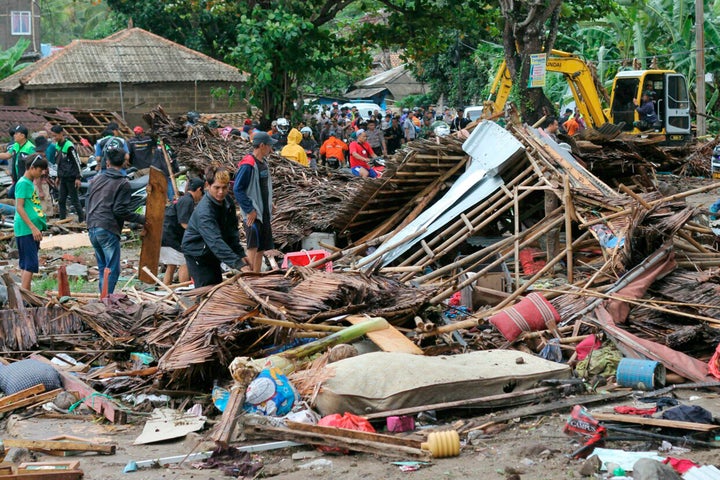
An underwater landslide caused by activity from the Anak Krakatau volcano is being blamed for a tsunami that struck Indonesia late Saturday, killing at least 222 people and injuring more than 800 others.
Normally, the U.S. Geological Survey would report on such events and provide any necessary data it had to the public. But it can’t due to America’s partial government shutdown, which began Saturday after President Donald Trump refused to sign legislation that didn’t include funding for his southern border wall.
The USGS website is dormant as of Sunday, except for a notice at the top. “Due to a lapse in appropriations, the majority of USGS websites may not be up to date and may not reflect current conditions,” the note reads. “Websites displaying real-time data, such as Earthquake and Water and information needed for public health and safety will be updated with limited support.”
According to the government shutdown contingency plan, the USGS will retain just 75 of its estimated 8,032 employees, or 0.9 percent.
“The USGS will suspend the majority of its activities with the exception of those functions to protect life and property,” the plan states. The document also claims that 450 employees will be “on call” for natural disasters, but it’s unclear if that process has been enacted, as the USGS website says the agency is not “able to respond to inquiries until appropriations are enacted.”
While scientific experts in Indonesia lead the way in analyzing the data, seismologists and volcanologists on Twitter stress how important agencies like the USGS are in providing valuable scientific data to the public.
“This is problematic for journalists like myself, but also it’s a shame they can’t help out by providing any commentary or advice to the general public too,” volcanologist Robin George Andrews told HuffPost.
The USGS is just one of many science-based government agencies affected by the shutdown. This government shutdown not only “slows scientific progress,” scientists point out, it also endangers lives.
Officials say that since there was no detectable quake prior to the tsunami, there was no way to know it was coming.
Sutopo Purwo Nugroho, the head of public relations at Indonesia’s National Disaster Mitigation Agency, told CNN that a “multi-hazard early warning system” is needed.
“We used to know that a tsunami happens after an earthquake. There was no quake last night,” Nugroho said. “That is why there was no warning.”
Indonesians have barely had a chance to catch their breath since their last natural disaster, suffering a magnitude 7.5 earthquake and ensuing tsunami back in September. More than 2,100 people died during that disaster.
